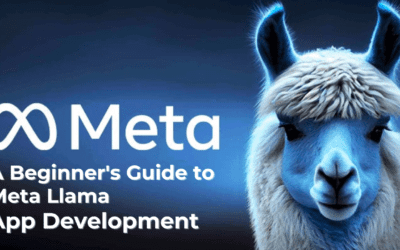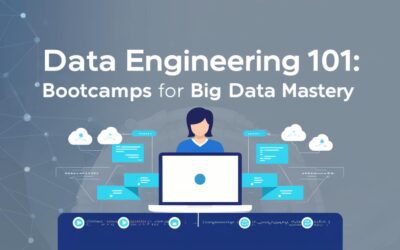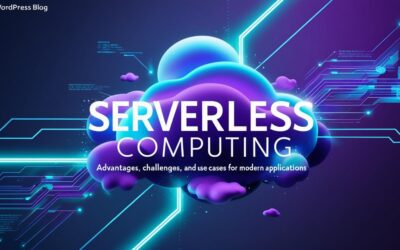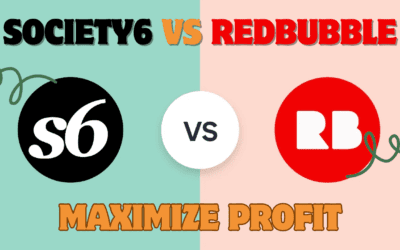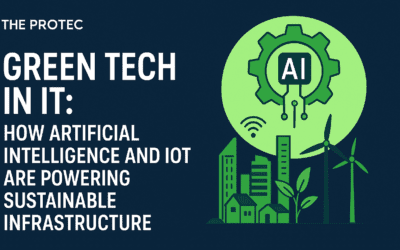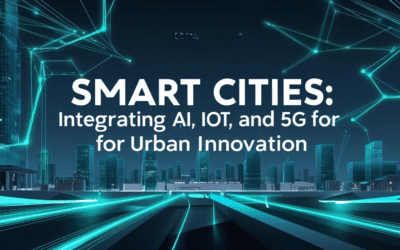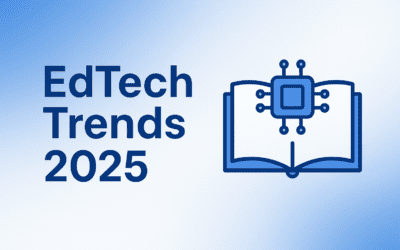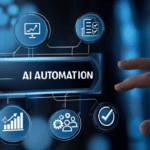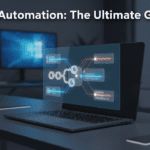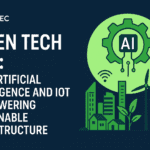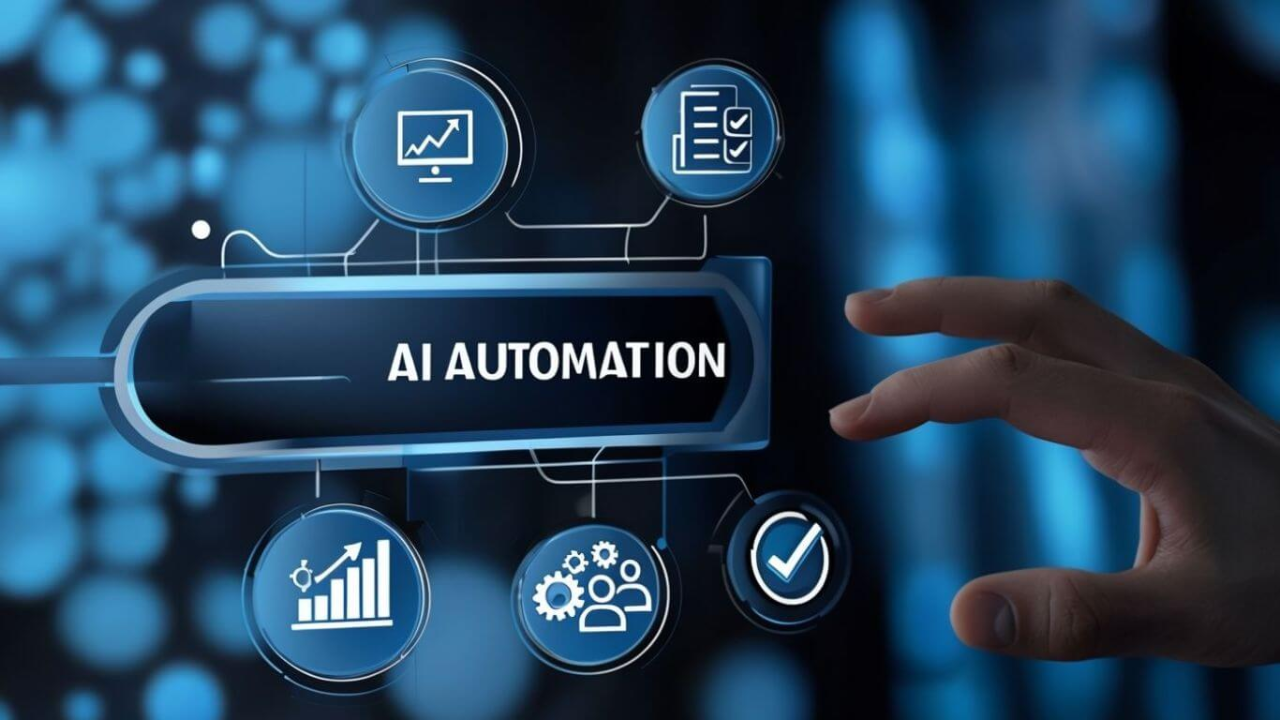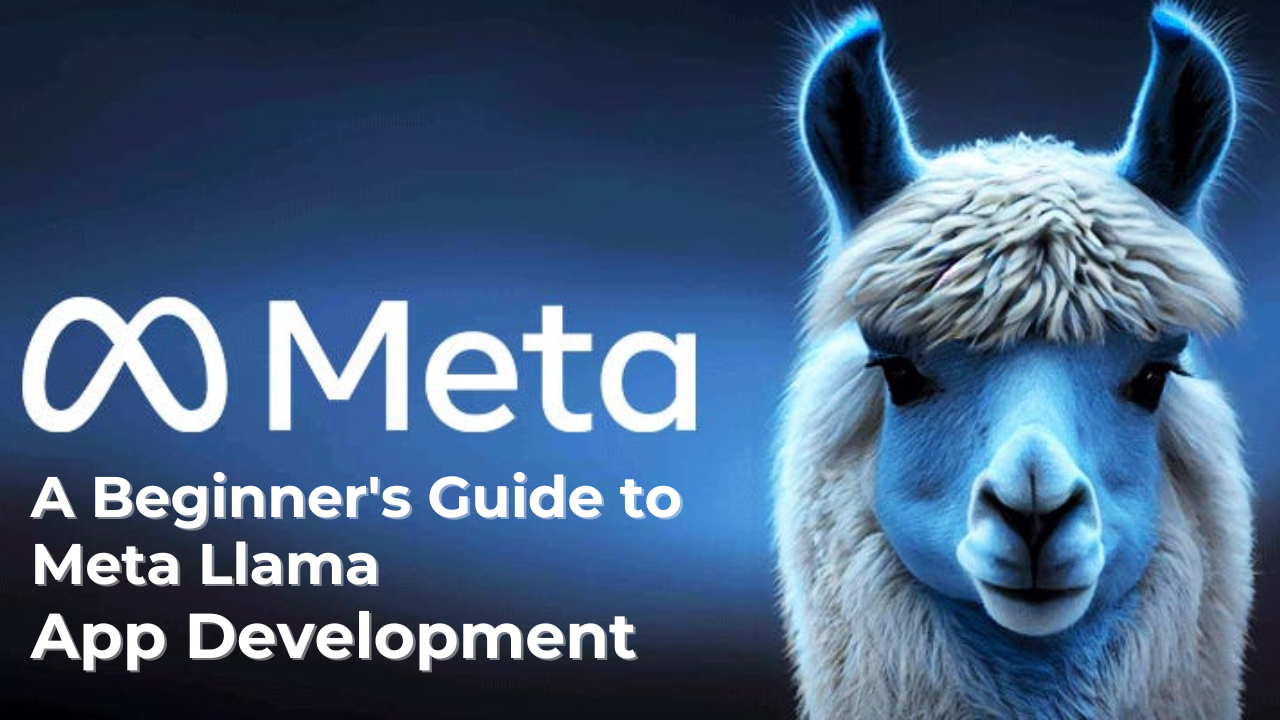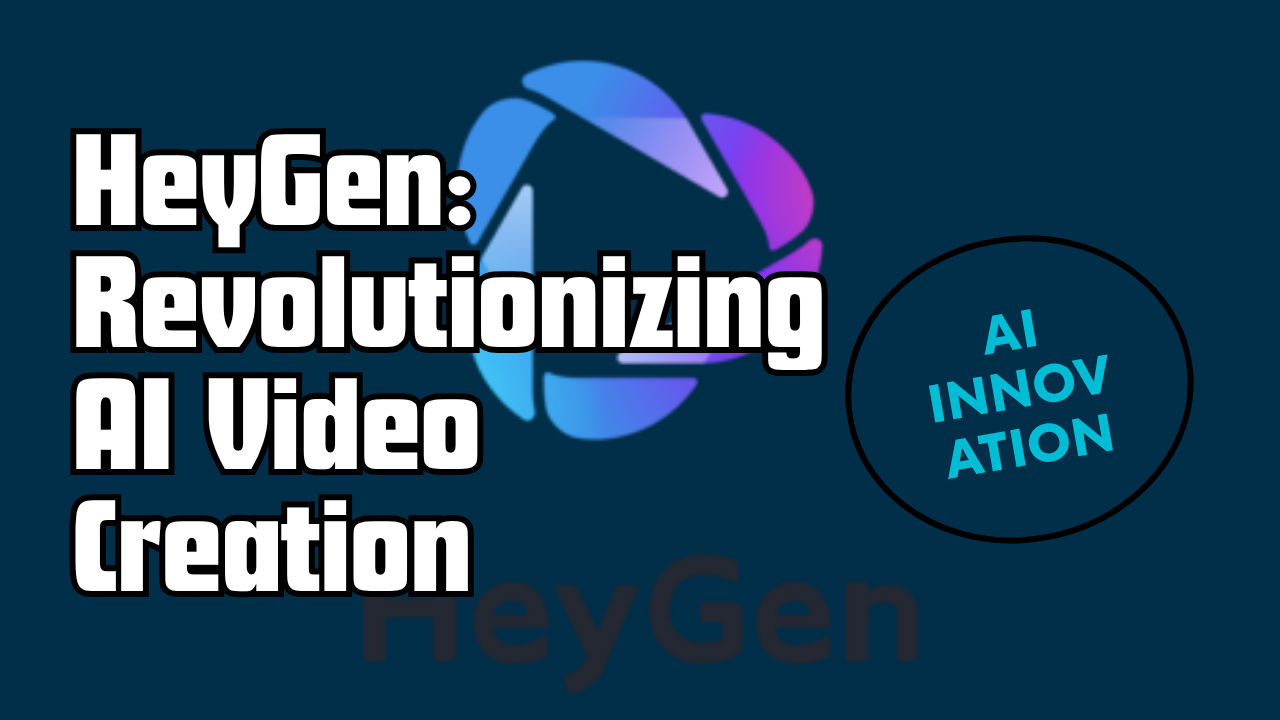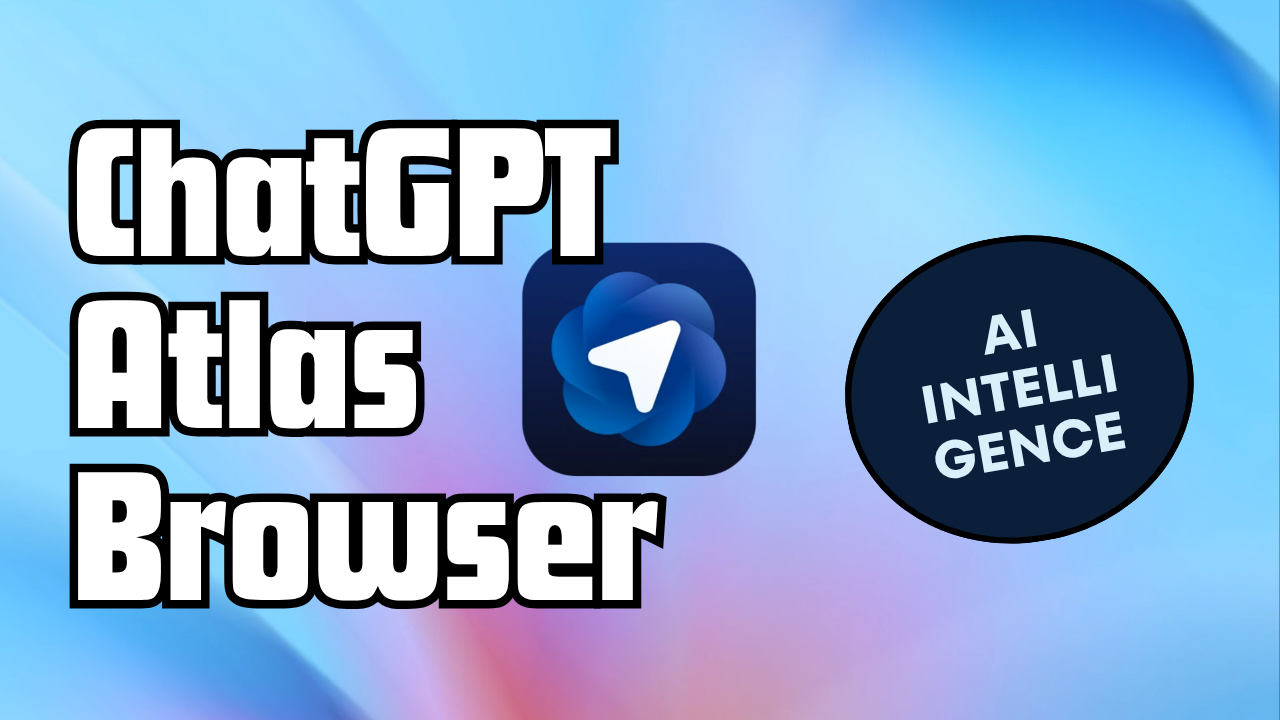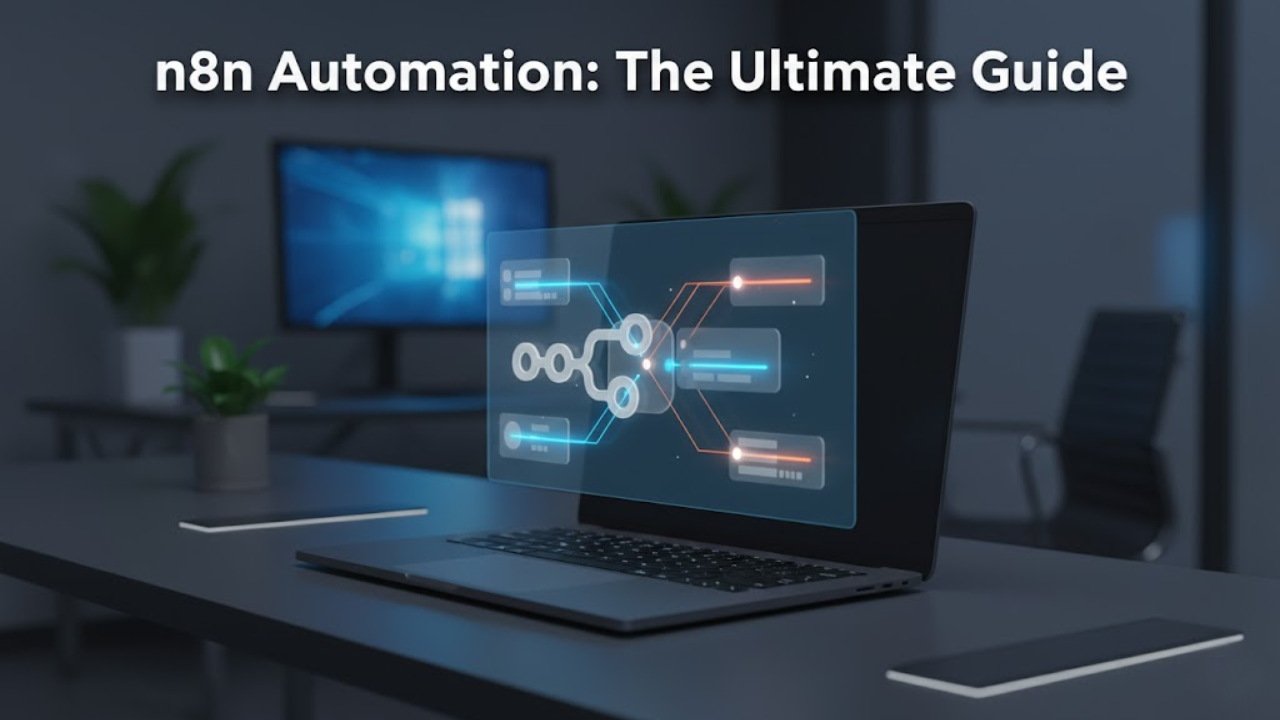In today’s fast-paced business environment, a powerful force is quietly transforming how we work. As you read this, AI automation is already at work in countless organizations, streamlining operations, answering customer inquiries, and analyzing vast datasets with superhuman speed and precision .
This isn’t a distant future concept; it’s a present-day reality driving tangible business outcomes. The global AI market is set to reach a staggering $1.3 trillion by 2030, signaling a fundamental shift in how businesses operate and compete . This guide will demystify AI automation, showcase its real-world impact, and provide a clear path for you to harness its potential.
What is AI Automation?
Artificial intelligence automation, or AI automation, is the fusion of AI technologies with automation tools to handle complex tasks with minimal human intervention. Unlike traditional automation, which follows rigid, predefined rules, AI-powered systems adapt and learn using machine learning (ML), natural language processing (NLP), and predictive analytics .
Think of it as the evolution from a basic calculator to a supercomputer. Traditional automation is like that calculator—excellent for repetitive, structured tasks like data entry or invoice processing based on fixed “if-then” rules . AI automation, however, brings intelligence into the process. It can analyze unstructured data, understand context, make judgment-based decisions, and improve over time .
A customer service chatbot perfectly illustrates this difference. A basic automated bot follows a static script. An AI-powered bot understands customer intent, learns from each interaction, and continuously refines its responses to solve problems more effectively .
How AI Automation Works in Practice
AI automation follows a structured, intelligent workflow to process information and execute tasks :
- Input Handling: The system ingests data from various sources, which can be structured (like spreadsheets) or unstructured (like emails, chat logs, or scanned documents) .
- Model Processing: Machine learning models analyze this data to uncover insights, detect patterns, classify content, or predict future outcomes . For example, an insurance company’s model might identify high-risk claims by analyzing historical fraud patterns.
- Trigger Execution: Based on the model’s analysis, the system checks if specific conditions are met. These triggers are rules that initiate automated actions, such as routing an urgent support ticket directly to the finance team .
- Decision Logic: Instead of just following a fixed path, the system uses context to make intelligent decisions. For a borderline loan application, it might analyze additional parameters like credit history before making a decision .
- Action Automation: Finally, the system executes the corresponding action—sending a real-time notification, updating a database, generating a report, or triggering another workflow—all without human intervention .
Real-World Benefits and Applications of AI Automation
The adoption of AI automation delivers clear, measurable benefits across business functions. It cuts inefficiencies, reduces errors, improves decision-making, and predicts problems before they occur .
Key Benefits
- Boosted Productivity and Cost Savings: By taking over routine work, AI automation frees up human teams to focus on strategic initiatives. According to McKinsey, it can slash labor costs by 30% in several industries .
- Proactive Risk Management: AI-driven monitoring systems identify anomalies in real-time, allowing for a proactive response to potential disruptions or security threats .
- Enhanced Customer Experience: AI enables personalized, round-the-clock service through chatbots and recommendation engines, making customers feel valued and improving loyalty .
- Improved Accuracy: AI thrives on precision, drastically reducing human error in data-heavy tasks like financial analysis or compliance reporting .
AI Automation in Action Across Industries
This technology isn’t theoretical; it’s delivering value in tangible ways today. The table below highlights several compelling use cases.
| Industry | Application | Real-World Example |
|---|---|---|
| Manufacturing | Predictive Maintenance | BMW uses AI to monitor conveyor systems, predicting failures and avoiding an average of 500 minutes of downtime annually at a single plant . |
| Healthcare | Diagnostics & Admin | Hospitals use AI tools like Sybil to analyze CT scans and predict lung cancer risk up to six years in advance. AI also automates administrative workflows, reducing the burden on clinicians . |
| Finance | Fraud Detection | Mastercard’s Decision Intelligence technology uses AI to analyze transaction behavior in real-time, blocking fraudulent transactions with over 90% accuracy . |
| Retail & E-commerce | Personalized Recommendations | Amazon and Spotify leverage sophisticated AI recommendation engines to personalize product and music suggestions, dramatically improving customer engagement and sales . |
| Supply Chain | Inventory & Warehouse Management | Walmart uses machine learning to predict demand fluctuations, optimizing stock levels and reducing waste. Companies like inVia Robotics deploy autonomous robots for warehouse picking, improving productivity . |
| HR | Recruitment & Onboarding | Companies like Unilever use AI to screen resumes and assess candidate fit, speeding up hiring and reducing human bias in the initial stages . |
Implementing AI Automation in Your Business: A Starter Guide
Embarking on your AI automation journey doesn’t require a massive budget or a team of PhDs. Success hinges on a strategic approach.
- Identify High-Impact Processes: Start by pinpointing repetitive, time-consuming, and data-intensive tasks. These are prime candidates for automation. Look for processes with clear rules and high volume, such as invoice processing, data entry, or basic customer inquiries . Prioritizing simple processes that deliver quick wins can demonstrate immediate ROI and build momentum .
- Select the Right Tools: Choose beginner-friendly platforms that align with your technical capability and budget. For non-technical users, no-code platforms are ideal. Key tools include:
- FlowForma: A no-code platform for automating complex business processes like onboarding and compliance without needing IT expertise .
- Zapier + OpenAI: Connects thousands of apps and uses AI to automate tasks like content generation and lead management through a visual interface .
- n8n: An open-source automation platform that offers deep customization for building complex, AI-enhanced workflows .
- Follow Best Practices for Implementation:
- Plan and Strategize: Define clear objectives and ensure you have clean, reliable data to feed your AI models. “Bad data leads to major problems down the line,” so using process automation to gather and standardize data first is a critical foundation .
- Address Adoption Challenges: Prepare for hurdles like resistance to change and integration complexities by investing in employee training to build AI literacy .
- Ensure Scalability: Choose tools that can grow with you and integrate smoothly with your existing systems, like ERP or CRM software .
The Future of Work with AI Automation
The rise of AI automation is reshaping the workplace, but it’s not about replacing humans. The World Economic Forum predicts a net increase of 78 million new jobs by 2030, as businesses balance automation with workforce transformation .
The future is one of human-AI collaboration. As AI handles routine data entry and scheduling, employees can focus on high-value work requiring creativity, critical thinking, and emotional intelligence . This shift will create demand for new skills and roles, such as AI trainers, prompt engineers, and MLOps specialists, making AI and automation literacy an invaluable career asset .
Conclusion: Your Next Step with AI Automation
AI automation is more than a technological upgrade; it’s the new operating system for business. It empowers organizations to operate with unprecedented efficiency, insight, and adaptability. From the factory floor to the executive suite, its transformative impact is undeniable.
The question is no longer if you should adopt AI automation, but how and where to start. The first step is to look at your own daily tasks and business processes—where are the bottlenecks? Where is time being lost to repetitive work? Identify one process, explore the tools available, and take the first step toward building a smarter, more efficient, and more competitive organization.
Ready to explore how AI automation can transform your business processes? Start by auditing one departmental workflow this week to identify your first automation opportunity.
Sources and References
- FlowForma. “Explained: Complete Guide for 2025 AI Automation.” https://www.flowforma.com/blog/ai-automation
- Team-GPT. “15 Real-World Examples of AI Automation In 2025.” https://team-gpt.com/blog/15-real-world-examples-of-ai-automation-in-2025
- Automate.org. “Industrial AI Case Studies.” https://www.automate.org/ai/case-studies
- upGrad. “AI Automation Explained: Tools, Benefits, and How It Differs From Automation.” https://www.upgrad.com/blog/ai-automation-explained/
- FlowForma. “7 AI Automation Examples to Apply in Your Own Business.” https://www.flowforma.com/blog/ai-automation-examples
- Future-Code. “Case Studies in Transforming AI Process Automation …” https://future-code.dev/en/blog/case-studies-in-transforming-ai-process-automation-across-sectors/
- LinkedIn. “A Beginner’s Guide to AI Automation: Everything You Need to Know.” https://www.linkedin.com/pulse/beginners-guide-ai-automation-everything-you-need-know-remote-work-yyk0f
- Claydesk. “AI-Driven Automation: Benefits, Challenges, and Real-World Applications.” https://blog.claydesk.com/ai-driven-automation-benefits-challenges-and-real-world-applications/
- QBotica. “Companies Using AI: Real-World Use Cases & 2025 Trends.” https://qbotica.com/companies-using-ai-real-world-use-cases-and-enterprise-trends-for-2025/
- Medium. “The Beginners Guide to AI Automations: From Basic Workflows to Intelligent Agent.” https://smartproductmanager.medium.com/beginners-guide-to-ai-automations-from-basic-workflows-to-intelligent-agent-40eb3673d6ff
